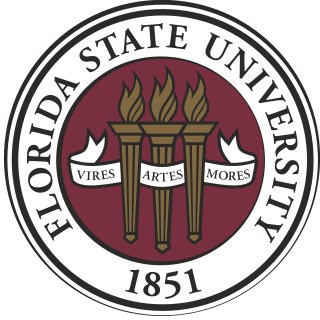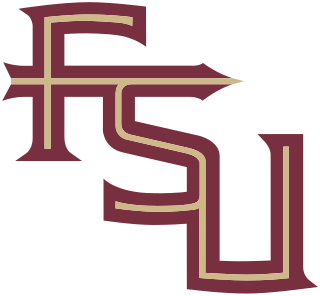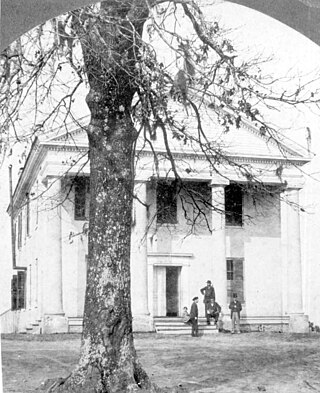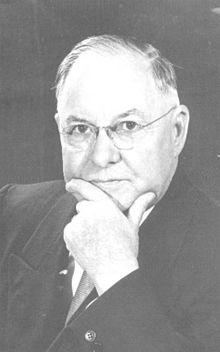
Florida State University is a public research university in Tallahassee,Florida,United States. It is a senior member of the State University System of Florida. Chartered in 1851,it is located on Florida's oldest continuous site of higher education.

The Florida State Seminoles are the athletic teams representing Florida State University located in Tallahassee,Florida. They compete as a member of the National Collegiate Athletic Association (NCAA) Division I level,primarily competing in the Atlantic Coast Conference (ACC) for all sports since the 1991–92 season;within the Atlantic Division in any sports split into a divisional format since the 2005–06 season.

Doak S. Campbell Stadium,popularly known as "Doak",is a football stadium on the campus of Florida State University in Tallahassee,Florida,United States. It is the home field of the Florida State Seminoles football team of the Atlantic Coast Conference (ACC).

The Florida State University Marching Chiefs is the official marching band of Florida State University. The band has served in this capacity since the 1940s and continues to perform at all home football games as well as several away games each year;they have also performed at baseball and softball games. There are over 400 members,or Chiefs,as members are sometimes known,in the band who hail from almost every academic department within the university.

The 2006 Florida State Seminoles football team represented Florida State University during the 2006 NCAA Division I-A football season. The team was coached by Bobby Bowden and played their home games at Doak Campbell Stadium in Tallahassee,Florida. They were members of the Atlantic Coast Conference (ACC) and the Atlantic Division.

The Florida State Seminoles football team represents Florida State University in the sport of American football. The Seminoles compete in the NCAA Division I Football Bowl Subdivision (FBS) of the National Collegiate Athletic Association (NCAA) and the Atlantic Coast Conference (ACC). The team is currently coached by Mike Norvell,and plays home games at Doak Campbell Stadium,the 15th largest stadium in college football,located on-campus in Tallahassee,Florida. The Seminoles previously competed as part of the ACC Atlantic Division.

The Florida–Florida State football rivalry is an American college football rivalry between the teams of the two oldest public universities of the U.S. state of Florida:the University of Florida (UF) Gators and Florida State University (FSU) Seminoles. Both universities participate in a range of intercollegiate sports,and for the last several years,the Florida Department of Agriculture and Consumer Services has sponsored a "Sunshine Showdown" promotion that tallies the total number of wins for each school in head-to-head sports competition. However,the annual football game between the Gators and Seminoles has consistently been the most intense and notable competition between the in-state rivals.
Robert Goin was an American football and baseball coach and college athletics administrator. He was the head football coach at Bethany College in Bethany,West Virginia from 1963 to 1972,compiling a record of 45–32–2. He was also the college's head baseball coach and athletics director. Goin was the athletics director at California University of Pennsylvania from 1979 to 1981,Florida State University from 1990 to 1994 and the University of Cincinnati from 1997 to 2005

Mina Jo Powell Alumni Green comprises a half-acre on the campus of Florida State University. The site encompasses a rich history,which includes the green as the original site for Florida A&M University,also located in Tallahassee,Florida. Mina Jo Powell graduated from Florida State University. FSU President Bernard Sliger dedicated the green in her name November 10,1990. Until 1951,the Alumni Green,as it had been called for nearly a half-century,was the sole site for commencement ceremonies when FSU was called the Florida State College for Women. In 1946,the college's name changed to Florida State University and admission included men. After World War II,and with the influx of nearly ten times the number of students before the War,ceremonies shifted to the newly constructed Doak Campbell Stadium in 1951.

The history of Florida State University dates to the 19th century and is deeply intertwined with the history of education in the state of Florida and in the city of Tallahassee. Florida State University,known colloquially as Florida State and FSU,is one of the oldest and largest of the institutions in the State University System of Florida. It traces its origins to the West Florida Seminary,one of two state-funded seminaries the Florida Legislature voted to establish in 1851.

The 1993 Florida State Seminoles football team represented Florida State University and were the national champions of the 1993 NCAA Division I-A football season. The team was coached by Bobby Bowden and played their home games at Doak Campbell Stadium.

The 1998 Florida State Seminoles football team represented Florida State University in the 1998 NCAA Division I-A football season. The team was coached by Bobby Bowden and played their home games at Doak Campbell Stadium.

Robert Manning Strozier was president of Florida State University between 1957 and 1960. The main library on the Tallahassee campus of Florida State University bears his name.
The 1964 Florida State Seminoles football team was an American football team that represented Florida State University as an independent during the 1964 NCAA University Division football season. In their fifth season under head coach Bill Peterson,the Seminoles compiled a 9–1–1 record,were ranked No. 11 in the final UPI Coaches Poll,defeated Oklahoma in the Gator Bowl,and outscored opponents by a total of 263 to 85.

The 1976 Florida State Seminoles football team represented Florida State University as an independent during the 1976 NCAA Division I football season. Led by first-year head coach Bobby Bowden,the Seminoles compiled a record of 5–6. Florida State played home games at Doak Campbell Stadium in Tallahassee,Florida.

The 1995 Florida State Seminoles football team represented the Florida State University as a member of the Atlantic Coast Conference (ACC) during the 1995 NCAA Division I-A football season. Led by 20th-year head coach Bobby Bowden,the Seminoles compiled an overall record of 10–2,with a mark of 7–1 in conference play,and finished as ACC co-champion. They played their home games at Doak Campbell Stadium in Tallahassee,Florida.

The 1990 Florida State Seminoles football team represented Florida State University in the 1990 NCAA Division I-A football season. The team was coached by Bobby Bowden and played their home games at Doak Campbell Stadium.

The 1989 Florida State Seminoles football team represented Florida State University in the 1989 NCAA Division I-A football season. The team was coached by Bobby Bowden and played their home games at Doak Campbell Stadium.

The 1986 Florida State Seminoles football team represented Florida State University in the 1986 NCAA Division I-A football season. The team was coached by Bobby Bowden and played their home games at Doak Campbell Stadium.

The 1984 Florida State Seminoles football team represented Florida State University in the 1984 NCAA Division I-A football season. The team was coached by Bobby Bowden and played their home games at Doak Campbell Stadium.










